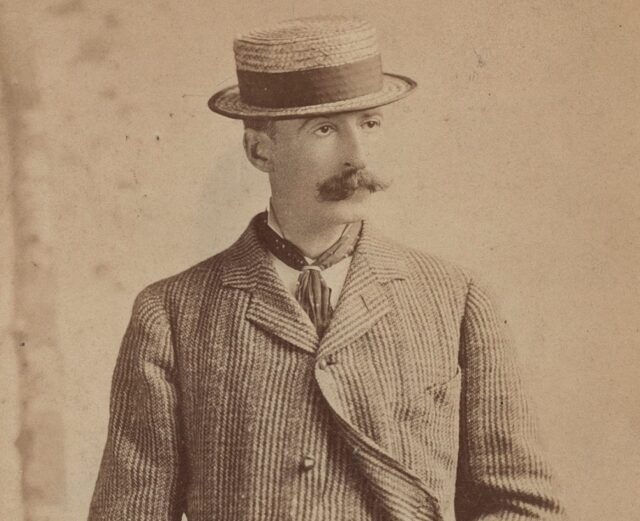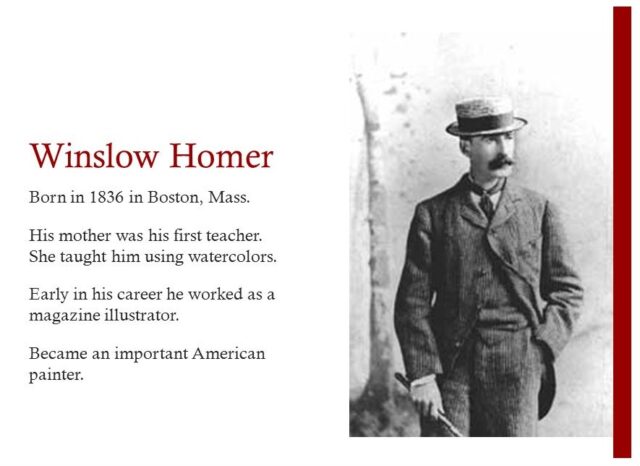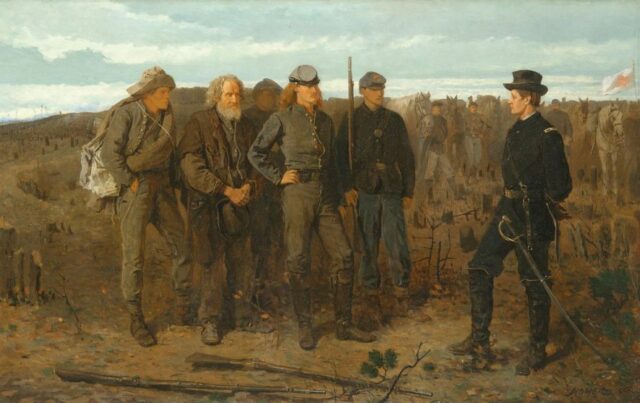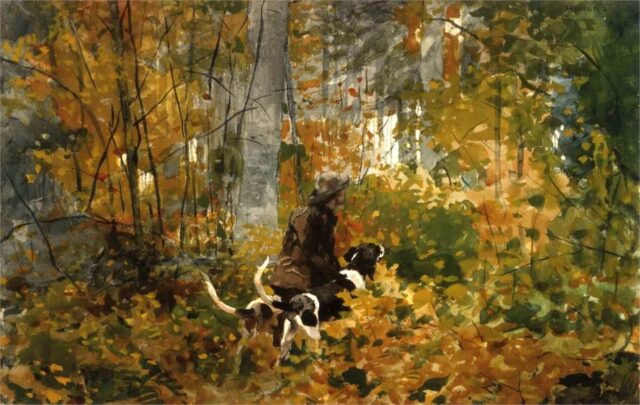
Most art scholars and psychologists agree that art gives meaning to our lives and, as such, is a part of life. Also, because art helps people understand the world they are living in and also helps to understand the history of our world, it can be said that art is part of life.
Art is also a very helpful tool for understanding our emotions. You don’t have to be an art lover to experience art as part of life because art is a crucial part of our culture; you are always consciously or unconsciously influenced by art.
Because an artist uses art to communicate ideas, art has become a tool for self-expression for the artist. The more life experiences an artist has had, the more the artwork will be an extension of the real-life experiences and emotions of the artist.
However, many people forget that it is just as true (and perhaps easier to understand) to use the phrase the other way round – art is part of life, but life is also part of the art!
Winslow Homer is an excellent example of an artist whose art was part of his life, and his life formed part of his art. In this article, we’ll look at why many art historians agree with this.
Learn about Winslow Homer – the Beginning

Winslow Homer (February 24, 1836 – September 29, 1910) was an American landscape painter and printmaker. Art historians consider him a very important figure in the history of American art. Although he was largely self-taught, art was always part of his life. It started when he was very young and, as a young boy, informally taught to draw and paint by his mother, who was a watercolor artist herself.
Homer had a happy childhood and a relatively uncomplicated life, and art historians speculate that his rural and happy childhood were the main factors why it is rather easy to see that his illustrations, and later his watercolors and other paintings showcase that art was part of his life and real-life part of his art.
Art as Part of Life and Life as Part of the Art
Winslow Homer started a career as an illustrator, and for about twenty years, he provided illustrations for magazines. He created illustrations of “life” – life during war and life in social situations. Life itself inspired his illustrations and later determined the subjects in most of the Winslow Homer watercolor paintings. He is seen as an artist who successfully made life part of his art.
His first illustrations were about Boston life and rural life in New England. The first Winslow Homer prints and illustrations for magazines such as “Ballou’s Pictorial” and “Harper’s Weekly” excellently showed that the life he knew was what was depicted in his works of art.
During that period, he also unconsciously taught magazine readers that artworks (his illustrations) were part of their lives. And on the other hand, his illustrations demonstrated that life itself (his subjects and the scenes) could be converted into art.
Several of Winslow Homer’s illustrations and watercolors in the late 1850s are about his uncle’s Belmont mansion, and the croquet games played there. This is another example that his art is part of the life known to him.
The Artist Winslow Homer and his Depiction of the Civil War

Winslow Homer was exposed to the reality of war early in his life. When he was sent by “Harper’s Weekly” to the front of the Civil War to document the war, he used his artistic talent trying to convey messages about the hardship of war. But apart from the actual war scenes, he also created illustrations and portraits of the ordinary life of average troops.
He created illustrations of “normal” life aspects of the Civil War – aspects not often covered by other reporters and illustrators. For example, his wartime illustrations included scenes of soldiers playing football and celebrating Thanksgiving. The list of Winslow Homer prints from that time shows how Homer experienced his art as part of life on the front during the war, and unintentionally, he showed people that life, even life at war, can go on and be captured in art.
In other words, the artist Winslow Homer could put the life he was experiencing at the war front onto canvas.
The Good and the Bad of Real Life
Suppose it is true that an artist always depicts something consciously or unconsciously linked to real-life experiences. In that case, the artist will communicate the beautiful part of life and the not-so-beautiful.
As you learn all about artist Winslow Homer, you discover that because he experienced art as part of life, some of Winslow Homer’s watercolor paintings depict the darker side of life.
“On the Trail” is part of a series of watercolors on deer hunting, called houding, in the wilderness of the Adirondacks. Hounding was a method of killing deer with dogs tracking and chasing the deer. As the hunter entered the forest with his dogs, the dogs were released one at a time. The deer then took to the water to get away from the dogs. Finally, the hunter waited in a boat, overtook the deer, and then shot or clubbed the deer.
Although “On the Trail” is a beautiful painting, the theme of the painting is definitely not about a beautiful part of life in the forest. But it is part of forest life Homer had experienced, and therefore it is reflected in the painting.

Conclusion
We hope this article again convinces you that art is part of life; if you are an artist, you might also experience that life is part of your art. Winslow Homer is an example of an artist who not only had art as part of his life but whose life was part of his art as well. He created works of art about the life he experienced and the emotions he felt.







